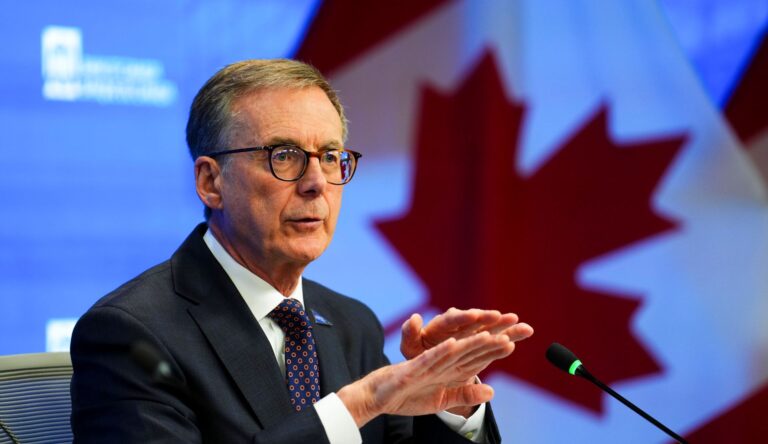(This article has been translated into French.)
We are witnessing a massive effort to fight a global pandemic with untold loss of life and livelihoods. Public authorities are taking unprecedented actions to fight COVID-19. Federal government measures include support to people and businesses: income and wage support, loans and rent support for small business as well as tax and other payment deferrals. Provinces are delivering much-needed support including testing, health services, and supplies. Municipalities are providing and coordinating front line actions, including many essential services such as public safety. All governments are facing a crisis of their own: disappearing tax and user fee revenue as well as looming borrowing costs.
Concerns over our current fiscal arrangements have long been expressed by the Council of the Federation, which represents premiers. Those concerns are shared by elected municipal officials and many economists and political scientists. But the COVID-19 pandemic has revealed even greater cracks in the system. We are seeing considerable fiscal pressures on governments with critical responsibilities but without the necessary resources they need to combat this pandemic. This misalignment of revenues and expenditure responsibilities is most severe for municipalities.
The key now is to fight this pandemic and to begin to gradually bring the economy back online without a resurgence of this contagion. However, we will need to pay close attention to the impact of the COVID-19 response on our overall fiscal arrangements. How much will it all cost in the end? Who will pay for it? And how do we ensure we have the right resources in the right place and at the right time in the future?
The question of who will pay for this is normally determined by Canada’s fiscal arrangements. Yet, given the levels of emergency spending and revenue losses involved, the ability to pay will be a critical consideration. At times like this, the federal government’s superior taxation and borrowing capacity will be called upon out of necessity, just like during the Great Depression, the Second World War and the 2008-09 recession. But is this situation sustainable? Are provincial and municipal tax powers adequate to finance their expenditure responsibilities? Can we reduce overlapping taxing and spending powers?”
The provinces, territories and municipalities have responsibility for the delivery of the country’s major expenditure programs — health, education, and social services and provision of most of Canada’s public infrastructure. The financial pressures on the provinces and territories are increasing with rapidly rising expenditures for health care in particular. Municipalities are limited in their revenue sources. The federal government uses equalization payments to support provinces that have less fiscal capacity, but what happens when the “have” provinces themselves face financial collapse? Just as historical wartime spending reshaped federal and provincial taxation and expenditure powers, the COVID-19 crisis will have both short-term and long-term implications for our fiscal relations.
Addressing the fiscal implications of this crisis will mean addressing two types of fiscal imbalances. First, horizontal fiscal imbalances arise because of differences in regional economic conditions and fiscal capacity to raise revenue, which make it difficult for all regions of the country to provide a similar level of public services. The Equalization Program is the main formal program for dealing with differences in provincial fiscal capacities, but large differences in the provinces’ ability to raise revenues remain, and this program has been criticized for distorting the fiscal decisions of the recipient provinces. The Fiscal Stabilization Program provides a federal backstop to a province facing a significant decline in revenues, but this program fails to provide adequate support to provincial governments that have suffered adverse economic shocks.
Second, vertical fiscal imbalances stem from the division of powers under the Constitution, under which the federal government has the greatest capacity to raise revenues while the provinces, territories, and municipalities have responsibility for the delivery of the country’s major expenditure programs — health, education, and social services and most public infrastructure. The financial pressures on the provinces and territories are increasing with rapidly rising expenditures for health care in a context of population aging made particularly visible by the COVID-19 crisis, which has exposed tragic weaknesses in our long-term care. Moreover, public demand for new programs, such as Pharmacare, and greater support for mental health and social assistance could further exacerbate provincial fiscal woes. At the same time, municipal governments have recently called for a minimum of $10 billion to $15 billion in emergency funding to deal with this crisis.
The allocation of fiscal resources within our decentralized federal system is a crucial matter in the post-COVID-19 era and requires a thorough and independent review. While the prime minister, premiers and mayors will debate who will pay for the costs of the COVID-19 pandemic, we must keep an eye on the big picture of fiscal federalism as it relates to the public interest. In order to do so, we are reaching out to key stakeholders to create an independent, non-governmental commission that will rethink the architecture of Canadian fiscal federalism in a post-COVID-19 world.
Charles Breton, executive director of the Centre of Excellence on the Canadian Federation at the Institute for Research on Public Policy; and Colleen Collins, vice-president of the Canada West Foundation, also contributed to this article.
This article is part of the The Coronavirus Pandemic: Canada’s Response special feature.
Photo: A park in North Vancouver closed because of COVID-19. Shutterstock.com, by Adam Melnyk.













